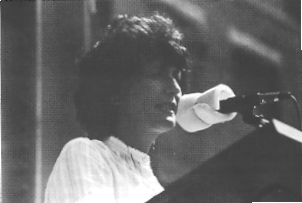Chapter 1
Preface
Pages 1-2-3
-
Chapter 2
Lessons
Pages 4-5-6
-
Chapter 3
Values
Pages 7-8-9
-
Chapter 4
Anger
Pages 10-11-12
-
Chapter 5
Action
Pages 13-14-15
-
Chapter 6
Affiliation
Pages 16-17-18
-
Chapter 7
Integration
Pages 19-20-21
-
Chapter 8
World-Historic Consciousness
Pages 22-23-24-25-26
-
Chapter 9
Universality
Page 27
-
Chapter 10
Root Causes
Pages 28-29-30
-
Chapter 11
The New Psychology
Pages 31-32-33
-
Acknowledge-
ments
Page 37
To foresee the tasks of the new psychology, we must understand its root causes. We have said that the new psychology is emerging in response to the demands of history, but history does not "cause" anything in a direct way. Instead, we must speak of a "causal chain" that begins from the economic roots of historical change. These produce political events, such as wars and revolutions, which, in turn, are the stimulus for the growth of peace movements. When peace movements grow into massive size, they provide the social context for the intensification of consciousness development of individuals. Finally, it is this intensification of consciousness development that requires a new psychology.
 |
Helen Caldicott, founder of women's action for nuclear disarmament: "A global view of reality and a sense of moral responsibility for humanity's future." |
The causal chain linking economics to wars to peace movements is documented in my book, The American Peace Movements (see footnote 3). The six, mass-based peace movements of U.S. history illustrate how peace movements arise in response to wars and threats of war. The Anti-Imperialist League (1898-1902) developed in response to the Spanish-American and Philippine Wars. The People's Council of America was a response to World War I (1917-1919). There were two U.S. peace movements in the 1930's in response to the rise of European fascism, the American League Against War and Fascism and the Emergency Peace Campaign. From 1946-1948 there was a mass opposition to the Cold War in the form of the Progressive Citizens of America, which sponsored the Wallace presidential campaign. In response to the Vietnam War (1966-1970) the mass peace movement was organized loosely into the "Mobes." And, in response to the renewed Cold War, there was a mass peace movement associated largely with the campaign for a Nuclear Freeze. There have been many smaller peace movements, both in response to these wars and war threats, and at other times, but no others that have been able to mobilize millions of people in the United States.
The six wars and war threats that caused the mass U.S. peace movements all arose as a result of basic economic factors. These also are documented in The American Peace Movements and will be presented here only in outline fashion. The Philippine War and World War I were the response to economic crises of over-production and unemployment, which led the imperialist countries to increase their exploitation of poor colonial and neo-colonial countries, and which led to economic rivalry among them for these foreign markets and investment areas.
These economic factors continued to play a role in causing the rise of European Fascism and World War II, as well as the Cold War and the Vietnam War, but were joined by a new factor as well: the attempt by the capitalists to reverse the shrinkage of the "free world," - i.e. the part of the world that is free for capitalist investment and exploitation. Finally, the most recent wars and war threats, culminating in the renewed Cold War of the 1980's, were caused not only by all of the previously mentioned factors, but a new and especially powerful force: the military-industrial complex. The military-industrial complex promotes war preparation in order to profit from government orders which are free from the competition of a capitalist market.
(continued on next page)
 |
 |
 |